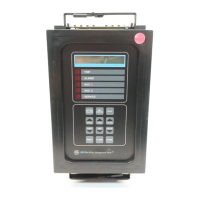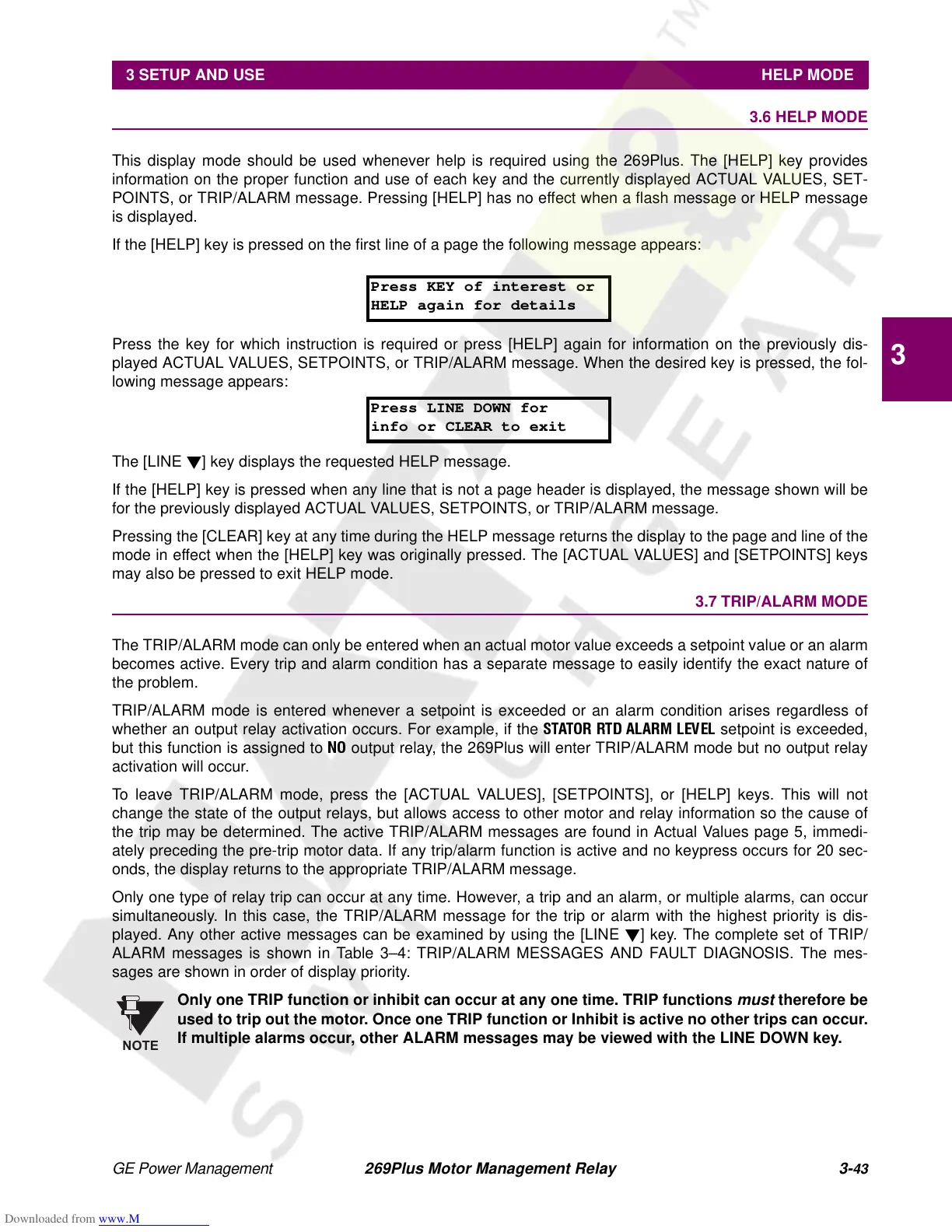GE Power Management 269Plus Motor Management Relay 3-
43
3 SETUP AND USE HELP MODE
3
3.6 HELP MODE
This display mode should be used whenever help is required using the 269Plus. The [HELP] key provides
information on the proper function and use of each key and the currently displayed ACTUAL VALUES, SET-
POINTS, or TRIP/ALARM message. Pressing [HELP] has no effect when a flash message or HELP message
is displayed.
If the [HELP] key is pressed on the first line of a page the following message appears:
Press the key for which instruction is required or press [HELP] again for information on the previously dis-
played ACTUAL VALUES, SETPOINTS, or TRIP/ALARM message. When the desired key is pressed, the fol-
lowing message appears:
The [LINE t] key displays the requested HELP message.
If the [HELP] key is pressed when any line that is not a page header is displayed, the message shown will be
for the previously displayed ACTUAL VALUES, SETPOINTS, or TRIP/ALARM message.
Pressing the [CLEAR] key at any time during the HELP message returns the display to the page and line of the
mode in effect when the [HELP] key was originally pressed. The [ACTUAL VALUES] and [SETPOINTS] keys
mayalsobepressedtoexitHELPmode.
3.7 TRIP/ALARM MODE
The TRIP/ALARM mode can only be entered when an actual motor value exceeds a setpoint value or an alarm
becomes active. Every trip and alarm condition has a separate message to easily identify the exact nature of
the problem.
TRIP/ALARM mode is entered whenever a setpoint is exceeded or an alarm condition arises regardless of
whether an output relay activation occurs. For example, if the
STATOR RTD ALARM LEVEL
setpoint is exceeded,
but this function is assigned to
NO
output relay, the 269Plus will enter TRIP/ALARM mode but no output relay
activation will occur.
To leave TRIP/ALARM mode, press the [ACTUAL VALUES], [SETPOINTS], or [HELP] keys. This will not
change the state of the output relays, but allows access to other motor and relay information so the cause of
the trip may be determined. The active TRIP/ALARM messages are found in Actual Values page 5, immedi-
ately preceding the pre-trip motor data. If any trip/alarm function is active and no keypress occurs for 20 sec-
onds, the display returns to the appropriate TRIP/ALARM message.
Only one type of relay trip can occur at any time. However, a trip and an alarm, or multiple alarms, can occur
simultaneously. In this case, the TRIP/ALARM message for the trip or alarm with the highest priority is dis-
played. Any other active messages can be examined by using the [LINE t]key.ThecompletesetofTRIP/
ALARM messages is shown in Table 3–4: TRIP/ALARM MESSAGES AND FAULT DIAGNOSIS. The mes-
sages are shown in order of display priority.
Only one TRIP function or inhibit can occur at any one time. TRIP functions
must
therefore be
used to trip out the motor. Once one TRIP function or Inhibit is active no other trips can occur.
If multiple alarms occur, other ALARM messages may be viewed with the LINE DOWN key.
Press KEY of interest or
HELP again for details
Press LINE DOWN for
info or CLEAR to exit
NOTE

